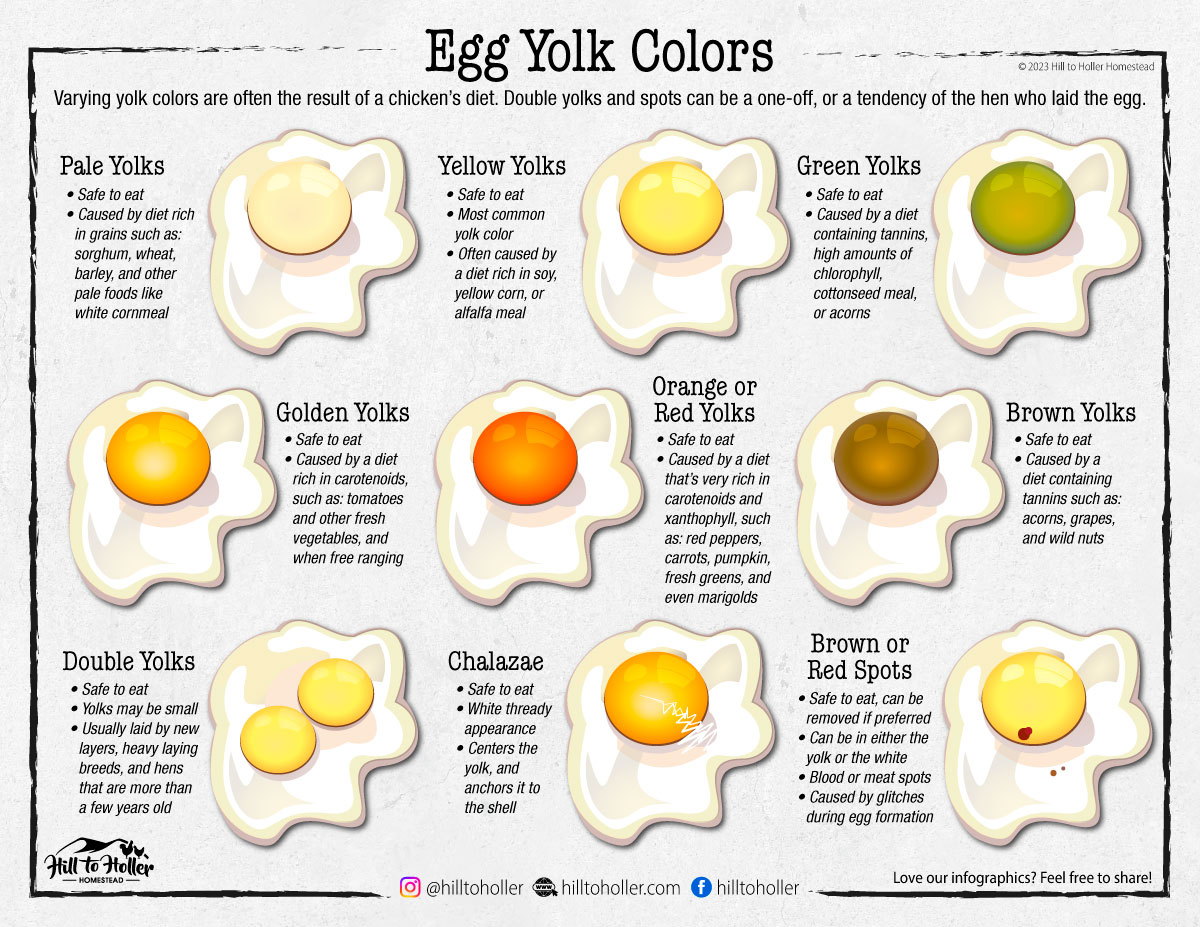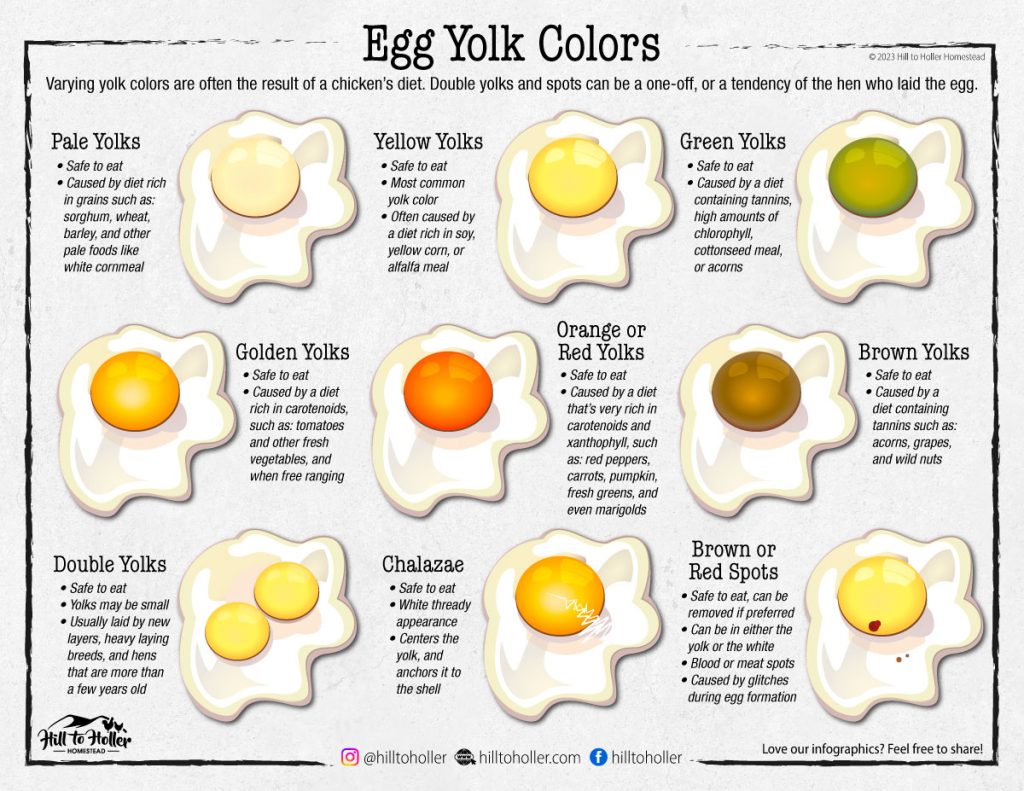Egg Yolk Colors

Have you ever cracked open a farm fresh egg and wondered why the yolk was so much more vibrant than the eggs that you buy at the store? Or, do you have chickens and are curious why sometimes their yolks are bright orange, or maybe even a strange looking green or brown? And just what *are* those weird spots that are in some eggs?
Egg yolks can come in different colors due to the diet of the chicken. The colors can range from pale yellow to deep orange or red, and even green or brown, depending on the types of food the chicken consumes.
- Pale yellow or white yolks are completely safe to eat. The pale coloring is caused by grain-rich diets high in wheat, sorghum, barley, and other lightly colored foods such as white cornmeal.
- Medium to bright yellow is what most people would visualize when they think of eggs. Most store bought eggs would fall into this category. Yellow yolks are a result of the hen eating a diet that’s rich in corn or alfalfa meal, or other yellow-colored foods.
- Golden yolks are what you’ll generally see in farm-fresh eggs. This bright golden yellow-orange color is from the hen’s diet being rich in foods containing carotenoids, like tomatoes and fresh greens and other vegetables. Free range hens often lay eggs with golden to orange yolks, due to the variety of foods which they consume.
- Orange or red yolks are safe to eat. These colors are caused by the hen consuming a diet that is very rich in carotenoid and xanthophyll containing foods, such as: red peppers, carrots, pumpkin, fresh greens, and even marigolds. Some people will even add red peppers and dried marigolds to their hens’ diets to deepen the yolk color.
- Green and brown yolks may look strange, but they are perfectly safe to eat. They’re caused by a diet rich in tannins and chlorophyll, and the most common culprit of a green-yolked eggs is that the hen who laid it had been eating acorns. Other foods such as cottonseed meal, grapes, and various wild nuts will also cause green to brown colored yolks.
There are several types of spots that can appear in eggs, ranging from white and stringy, to red or brown.
- Chalazae is the white, thready membrane that anchors the yolk and attaches it to either end of the membrane inside the shell. It’s safe to eat, and more noticeable in fresher eggs.
- Meat spots are brown specks that are made of protein deposits that are created while the egg is forming. They can be found in the white of the egg (albumen), and are safe to eat, but most people prefer to remove them before cooking the egg.
- Blood spots are small, red specks that can be found in the yolk of an egg. Like meat spots, they are also safe to eat and created while the egg is forming, though most people will remove them from the yolk before consuming.
Double (and rarely, triple) yolks can also occur.
Most often these are a result of an egg laid by a young hen being a new layer, or an older hen who’s nearing the end of her laying cycle. However, breeds that are heavy or prolific layers such as Buff Orpingtons and Rhode Island Reds do have a tendency to lay double yolk eggs regularly as well. The double yolk eggs are fine to eat, although each individual yolk may be smaller than a normal single

Click here to check out our other infographics & informational resources .
